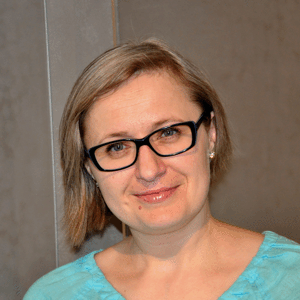Project SONATA
„Nanoporous GaN – a new platform for realization of quantum structures”
Project Description
The discovery of intense luminescence from porous-silicon (Cullis and Canham, Nature 353, 335, 1991) obtained by electrochemical etching in the early 90ties fueled the motivation to investigate other porous semiconductors. Nanoporous GaN is an emerging material that is interesting for numerous reasons. By now, the main motivation to study its properties was related to the possibility of refractive index tuning in the range inaccessible for other nitrides from (In,Al,Ga)N family. Examples of nanoporous GaN applications include: nanomembranes, high reflectivity nanoporous distributed Bragg reflectors (DBRs), vertical cavity surface emitting lasers (VCSELs) and edge emitting laser diodes with nanoporous cladding layers. They are already of extreme practical application and the scientific nitride community expects more to be achieved. Therefore within this Project we want to enter the emerging field of nanoporous photonic III-nitride structures to explore new areas, not studied previously such as etching of p-type GaN:Mg, n-type GaN:Ge, ion implanted GaN, nanoporous quantum well structures or etching GaN heterostructures with two dimensional hole gas.
Project value: PLN 1 128 960,00
Project financed by the National Science Centre (SONATA 18 call).
Project Goal
The project is focused first on understanding the electrochemical etching (ECE) mechanisms in highly n-type and p-type doped GaN in order to obtain pore sizes below 10 nm [task 1]. We plan to study the mechanisms of etching using new dopants – Ge and Mg. These are well-known donor and acceptors for GaN, but have not been yet used to dope layers for ECE. In order to achieve the project goals, we will use the plasma-assisted molecular beam epitaxy (PAMBE) technology that is extremely efficient in control of high doping. Other technology that is most widely used in the nitrides growth - MOVPE (metal-organic vapor phase epitaxy) reports problems for high n-type and p-type doping. In addition, ECE of p-type GaN is not described in the literature. We will also look for inhomogeneity in dopant incorporation related to the atomic steps kinetics during epitaxy. In case of GaN:Si we found uneven distribution of dopant when we carried out the growth on step-bunched surface.
In parallel, [task 2] we plan to explore the differences in ECE of standard and ion-implanted p-type and n-type GaN layers. Our initial studies show that we should be able to “block” etching by ion implantation of p-type material in contrast to n-type material, despite both are not conductive after ion implantation. This should be of extreme importance for semiconductor processing and ion implantation characterization, especially in context of recently reported p-type conductivity of ion-implanted GaN after ultra-high pressure annealing obtained at our Institute of High Pressure Physics.
Next, [task 3] we will use nanoporous material to study interesting quantum effects related to coupling of light with phonons and excitons in the structure features of sizes below 10 nm. We will study photoluminescence and cathodoluminescence at low temperatures as well as perform Raman scattering experiments.
Last but not least [task 4] we propose to fabricate new types of structures such as nanoporous quantum wells (QWs) that should provide a novel root for study the effects of hydrostatic/uniaxial strain on luminescence properties. We expect to see a redshift of the luminescence peak due to lower strain state in the QW and higher light extraction efficiency. Both of high interest for the fabrication of long wavelength nitride emitters. We also want to take advantage of electric fields in nitride heterostructures that lead to formation of two dimensional electron gas (2DEG) and hole gas (2DHG). We will investigate the possibility to use the holes present in high density at the interface in GaN/AlGaN structure for GaN etching. Therefore we will test the ECE as a probing tool to detect the presence of 2DHG that is not trivial by other techniques. Moreover, if 2DHG etching will be possible, it will open the way to “smart-cut” the GaN-based structures by ECE with atomic precision. Note that wurtzite GaN has electric fields that are not present in other semiconductors, and we can take advantage of it by showing such new effects, not possible to observe in other material systems.
Publications
Project is carried out from 2020 to 2023
Project resulted in the following publications:
- Electrochemical etching of p-type GaN using a tunnel junction for efficient hole injection By: N. Fiuczek, M. Sawicka, A. Feduniewicz-Żmuda, M. Siekacz, M. Żak, K. Nowakowski-Szkudlarek, G. Muzioł, P. Wolny, J.J. Kelly, C. Skierbiszewski "" Acta Materialia - under review
- Vertical Integration of Nitride Laser Diodes and Light Emitting Diodes by Tunnel Junctions By: M. Siekacz, G. Muziol, H. Turski, M. Hajdel, M. Żak, M. Chlipała, M. Sawicka, K. Nowakowski-Szkudlarek, A. Feduniewicz-Żmuda, J. Smalc-Koziorowska, S. Stańczyk, and C. Skierbiszewski, Electronics 9, 1481 (2020)
Research team:
- dr inż. Marta Sawicka - Primary Investigator (PI)
- mgr inż. Natalia Fiuczek
- mgr inż. Anna Feduniewicz-Żmuda

Fiuczek 
Feduniewicz-Żmuda
Publications
The project is realized from 2020 to 2023
-
Electrochemical etching of p-type GaN using a tunnel junction for efficient hole injection By: N. Fiuczeka, M. Sawicka,A. Feduniewicz-Żmuda, M. Siekacz, M. Żak, K. Nowakowski-Szkudlarek, G. Muzioł, P. Wolny, J.J. Kelly, C. Skierbiszewskia, Acta Materialia 234(15):118018, Published May 2022 DOI.org/10.1016/j.actamat.2022.118018
-
Electrically pumped blue laser diodes with nanoporous bottom cladding By: M. Sawicka, G. Muziol, N. Fiuczek, M. Hajdel, M. Siekacz, A. Feduniewicz-Żmuda, K. Nowakowski-Szkudlarek, P. Wolny, M. Żak, H. Turski, C. Skierbiszewski, Optics Express Vol. 30, Issue 7, pp. 10709-10722 (2022), Published February 2022 DOI.org/10.1364/OE.454359
-
Role of Metallic Adlayer in Limiting Ge Incorporation into GaN H. Turski, P. Wolny, M. Chlipala, M. Sawicka, A. Reszka, P. Kempisty, L. Konczewicz, G. Muziol, M. Siekacz, and C. Skierbiszewski, Materials 15, 5929 (2022). https://www.mdpi.com/1996-1944/15/17/5929
- Fabrication of GaN-air channels for embedded photonic structures M. Sawicka, O. Gołyga, N. Fiuczek, G. Muzioł, A. Feduniewicz-Żmuda, M. Siekacz, H. Turski, R. Czernecki, E. Grzanka, I. Prozheev, F. Tuomisto, and C. Skierbiszewski, Materials Science in Semiconductor Processing 155, 107234 (2023). https://doi.org/10.1016/j.mssp.2022.107234